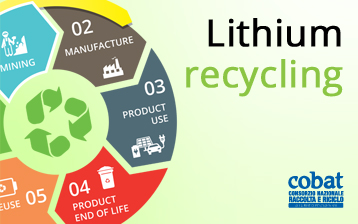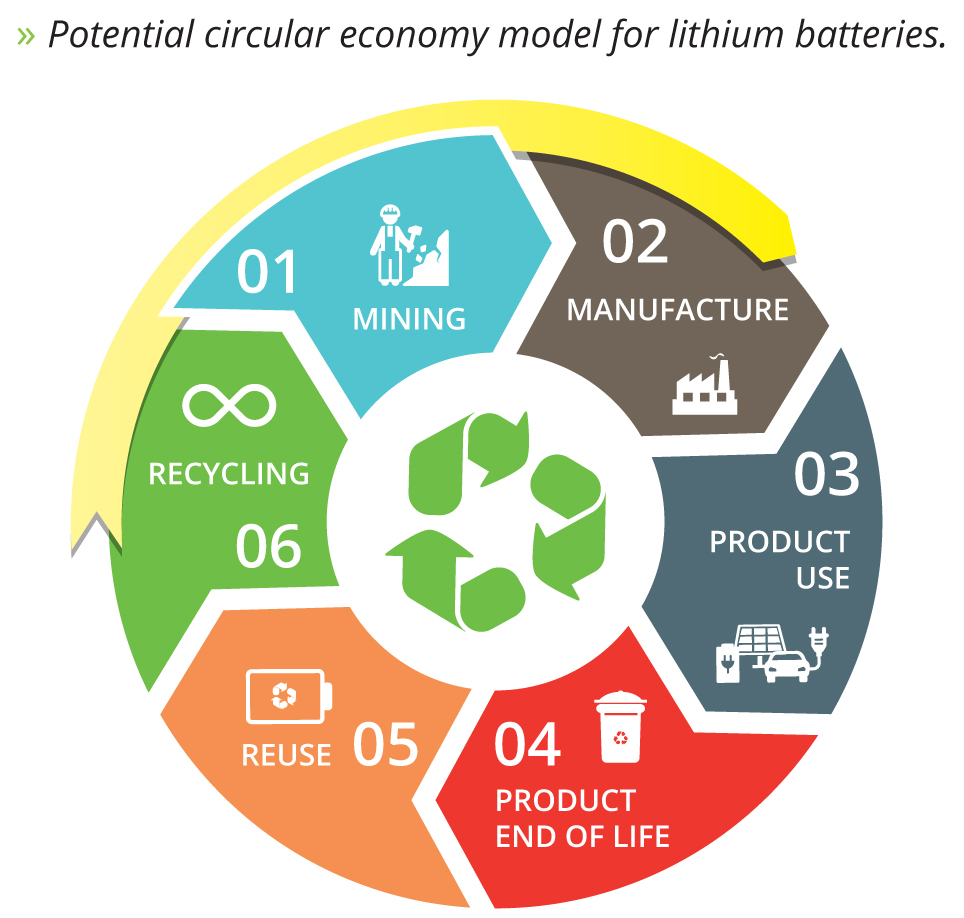The stationary storage systems and the promising transition towards a more sustainable mobility have a crucial impact in the intersection between the circular economy and the accumulation of energy.
This impact is represented by the management of the end of life of lithium batteries.
End-of-life management
This is the challenge of Cobat, the Italian platform of the circular economy, that has been collecting and recycling technological wastes, such as batteries, electrical and electronic equipment and tires for 30 years.
The consortium, which started in 1988 started to give a new leadacid batteries (the heart of cars), now bets on lithium batteries.
In 2014 Cobat signed an agreement with the National Research Council, which aims to identify an environmentally and economically sustainable technology for recycling lithium batteries.
The hydrometallurgical recovery process, developed by the CNR, is already in the patent phase and Cobat is working to realize the first pilot plant for the treatment and recovery of batteries in Italy, with innovative technologies unique in the world.
Furthermore, to increase the life of accumulators, Cobat is studying how to re-use exhausted car batteries for storing energy from renewable sources.
The batteries are also composed of these materials:
- COPPER
- ZINC
- NICKEL
- GRAPHITE
- PLASTIC
- ALUMINUM
- IRON
All these materials can be recycled
The value of raw materials
It is estimated that the value of raw materials that can be obtained from exhausted lithium batteries can vary from 2 to 8 €/kg; the recycling of lithium still has to find an economically sustainable solution, above all for the energy cost.







